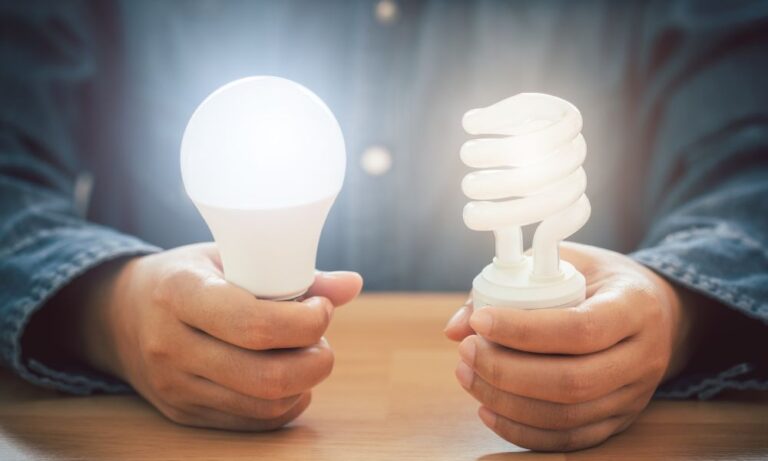Light-emitting diodes (LEDs) have emerged as an important energy-saving innovation. Despite their widespread adoption and proven benefits, four common myths and misconceptions about LED lighting persist.
Myth 1: LEDs Are Bad for Your Eyes
A common concern is that LED fixtures pose a risk to eye health, primarily due to misconceptions about blue light emission. LEDs actually emit less blue light than the sun! While it’s true that looking directly at any bright or intensified light source can be harmful, LEDs are not inherently dangerous.
Importantly, LED bulbs are available in a variety of color temperatures, including “warm” or “soft white,” which emit less blue light and are better suited for environments where eye comfort is a priority.
Myth 2: LED Are Prohibitively Expensive
Although the initial cost of LED lighting seems high, they are actually cost-effective when you consider the long-term savings in energy consumption and replacement costs. Their longevity and efficiency reduce the frequency of replacements and lower electricity bills. Depending on how much you use them, LEDs can last a decade or longer!
Business owners seeking to upgrade their lighting solutions should explore wholesale LED lights to access quality products at competitive prices and get significant savings on energy costs over time.
Myth 3: LED Are Harmful to the Environment
LEDs are environmentally safe. Unlike their compact fluorescent counterparts, LED bulbs do not contain mercury, making them less hazardous when disposed of or recycled. Also, LEDs create less waste because they don’t need replacements as often as other bulbs.
Myth 4: LED Require Special Fixtures
While some LEDs are not for use in enclosed fixtures, many LED bulbs work with such fixtures. Just be sure to check the product’s labeling for confirmation that they are suitable for use in enclosed fixtures if that’s how you intend to use them.
Transitioning to LED lighting doesn’t typically necessitate the overhaul of existing lighting fixtures. LED bulbs can fit into standard fixtures, making the switch to LED simple and cost-effective. This compatibility eliminates the need for extensive modifications, allowing homeowners and business owners to enjoy the benefits of LED lighting without significant upfront investments in new hardware.
Common myths and misconceptions about LED lighting shouldn’t stop you from using them in your home or business. When used according to specifications, and with the common sense not to look directly into them for any length of time, LEDs can save you money and provide pleasing, warm light. By choosing LED lighting, you make an environmentally responsible choice and invest in a technology that promises performance, savings, and durability.
